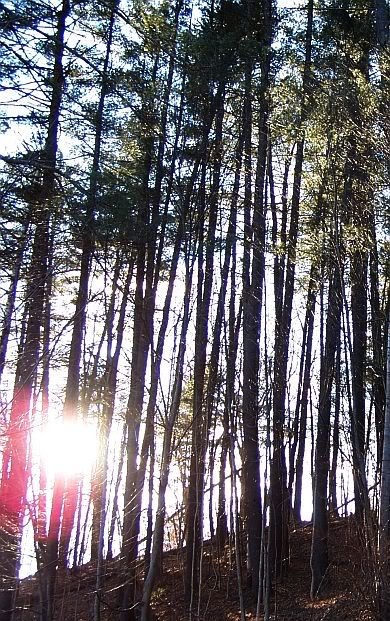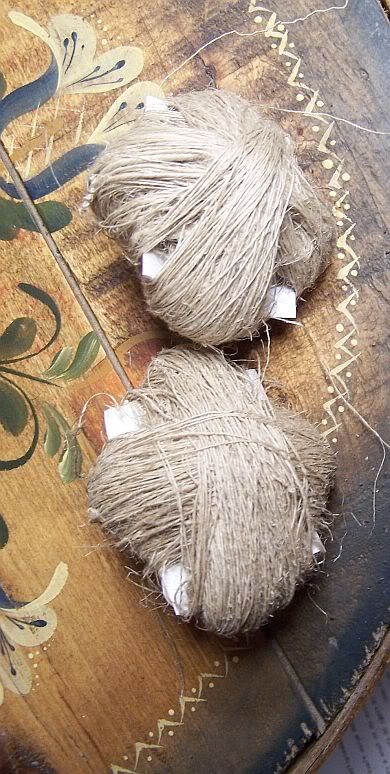2nd six more weeks
5th snow drops emerge
9th dusting of snow
15th woodchucks calling
20th skunk cabbages growing
29th 3 inches snow
2nd six more weeks
5th snow drops emerge
9th dusting of snow
15th woodchucks calling
20th skunk cabbages growing
29th 3 inches snow

The turkeys have given me a lot of inspiration. I've been noticing them each morning, when they leave their roosting area. They glide from the tops of the pines to the other side of the river. . This flock, or rafter, of turkeys has at least 40 hens to 3 or 4 Toms...as far as I can count. Each evening, at approximately 12 minutes after 5, they make their climb to the base of this hillside. It is usually too dark for me to photograph. I am in search of a stray feather or two..so one afternoon I decided to make the climb.
There are many fallen pines up here, downed by the strong winds from a big storm a few years ago. The turkeys jump on these and use them like ladders to make their way to the top. I look for feathers, but don't find any.
Looking up, it is hard to imagine how they get themselves up high into these trees at dusk. They make a lot of racket, bumping into each other and knocking down branches...flapping their wings...settling themselves into position,... or not. If you have ever seen chickens go to roost at night, it is very much the same procedure. You would think with all that flapping around there would be a spare feather or two. I could not find a one.
I took time to notice the view before heading down to the cabin. I was a bit disappointed that I didn't find a feather to study. I took a photograph a few weeks ago, a closeup of the feathers on the back of a hen that was outside my window. I loved the colors and thought they would make a good palette to use when mixing up dyes. A sort of turkey feather colorway.
Someone suggested that I use the image for a virtual palette..so I took the advice and had two of them generated. Here is the first one.
And the second.
Neither one seems to translate what I am seeing IRL. I want to see more iridescent blue and green and purple...so I will keep searching for the elusive feather. Sooner or later one will fall into my path. You just can't rush some things. You have to wait for them to happen.

Lots of organizing of papers and files, spills over into fiber organizing...and leads me to clean out my flax stash basket. I find lots of old singles, practice work, bits and pieces. Samples.
Wound off and ready to ply, I take the ply ball to the wheel and spend a few moments remembering where I purchased the stricks, and what wheel I spun them on. There are differences in the texture and the color, and I can see and feel the progress I have made over the years. Progress in the sense that my spun linen today is finer than this sample above, spun at least a year ago. These samples are not suitable for anything beyond perhaps.... a market bag, or a spa washcloth. A trip to the finishing pot on the stove for simmering, does little to smooth down the fly-away's and soften the linen.
A mangle would help considerably. I rolled it with a glass to bring up the shine.
After about 3 years of serving as a pot scrubber, it should be just right!
If you don't have time to watch, consider some of the things she says:
The Netherlands has quite a rich flax history.
The big question is if it's possible to make a product that is produced locally and transparently...at the price normal people can afford.
I understand that it makes sense to make something where it's cheapest...but that is only from an economic perspective.
From another perspective, it makes sense to produce things locally, for why carry things across the globe?
Some, actually quite a few, are the last businesses of their kind.
There's only ONE hackling mill left, there are only a few spinning mills left. That also makes it special to meet all those people and to record what they do, as they may well be gone in ten years....because the entire industry has moved to China.
I wonder if the region will continue to grow the flax, and just have shipped to be processed in China? Seems sad to think of all the bees missing out on all those fields of flax flowers. What about biodiversity?
To see the collection visit Thomas Eyck.com

© 2003-2025 by cyndy donohue